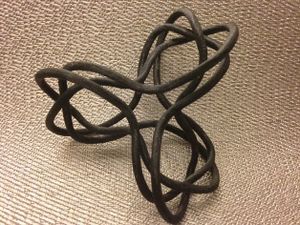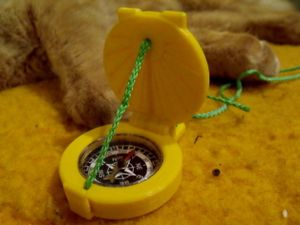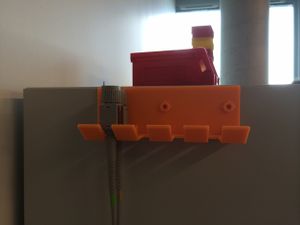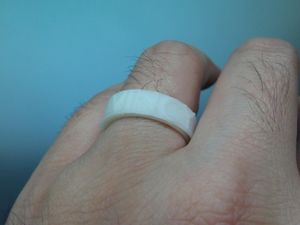User:Mengleka
Contents
Introduction
My name is Mitch Engleka and I am a junior at Penn State and I am majoring in Mechanical Engineering with a minor in Product Realization and a certificate in Engineering Design.
BLOGS
These weekly posts are assignments for EDSGN 497 J and will cover a wide range of 3D printing related topics throughout the semester
Blog #1
Something Amazing/Beautiful:
I really like the twisting knot designs that can be made in 3D CADD programs so I thought this thing looked really cool. Then, when I thought about actually printing it I was amazed at how someone had managed to print it in the first place. Our printers can't print floating pieces well at all so they must have used a different type of printer all together.
Something Funny/Weird:
I saw this and just thought it was kinda weird. That is all.
Something Useless:
Sundials haven't been widely used since the clock was invented. Nowadays we have clocks on our wrists, in out pockets, and hanging on walls all around us. Sundials are outdated and virtually useless when you can get watches for free.
Something Useful:
This thing effectively solves a problem we all face and that is chords sliding down the back or sides of our desk. This simple little thing will hold any type of cable from phone chargers to usb chords, it will keep everything easily in reach.
Something Surprising:
When I started looking on Thingiverse for things to post on this blog I knew that I could probably find anything I could want and much more things that I would never even think of so I was prepared to see some strange things. However, I never thought I would see an actual wedding wing. I was very surprised to see this when as I scrolled through the things.
Blog #2
After watching Marcin's TED talk, I am a little skeptical of the Open Source Ecology project. By streamlining the technology necessary for modern civilization into a handful of machines and devices the OSE project makes it seem like anyone can essentially build modern equipment from scratch. Then, the fact that it's all open source means that the materials will be cheap and all the machines will be heavily customizable. This all sounds great as a concept but impossible to implement well in reality.
The OSE project is meant to act as a fast track to modernization for developing countries, cities or villages. In these places, it is difficult to obtain high quality building materials due to cost and availability. This means that the people building the machines most likely will not have access to the exact materials called for in the design schematics provided by the OSE. When these materials can't be found, the builders will have to find substitutes and finding substitutes requires prior knowledge of engineering and machining. This is a problem because modern engineering skills are not usually found in rural developing areas. Without these skills, the people will have to turn to outside help, which can be difficult to do because communication between a developing area and the modern world is usually rather limited. All of these factors seem to point to the fact that the OSE will simply not work well in practice, without even mentioning to inherent finickiness of home made open source machines.
In the end, I believe Marcin's Open Source Ecology Project is a great concept that could help millions of people to enjoy the comforts of modern technology, but will ultimately fail when put into practice. This failure will come from a combination of lack of available building materials, lack of knowledge on the part of the builders, lack of support from the rest of the community, and the unreliability of home made equipment.
In the New York Times article about Marcin, I feel like he was treated rather unfairly. The article seemed to target and poke fun at his lifestyle more than talk about the project itself. Marcin later responded to the article and addressing its portrayal of him. In his response, he simply addresses to criticism from the article and tries to clear up any misconceptions the article presented. In my opinion, the response was very well written and seemed to throw everything back at the New York Times, giving them no more ammunition.
Unfortunately I do not know anyone who would be able to bring Open Source Ecology to Penn State.




